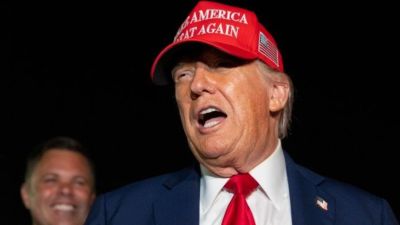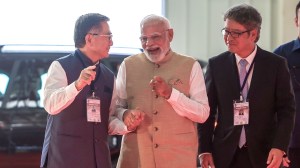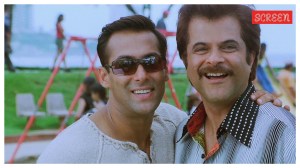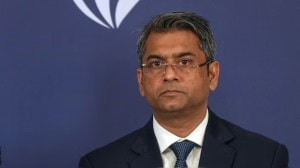Stay updated with the latest - Click here to follow us on Instagram
West Bengal: Drought-affected Bankura doesn’t know whom to blame
Bankura has historically remained one of the most drought-prone districts of West Bengal.
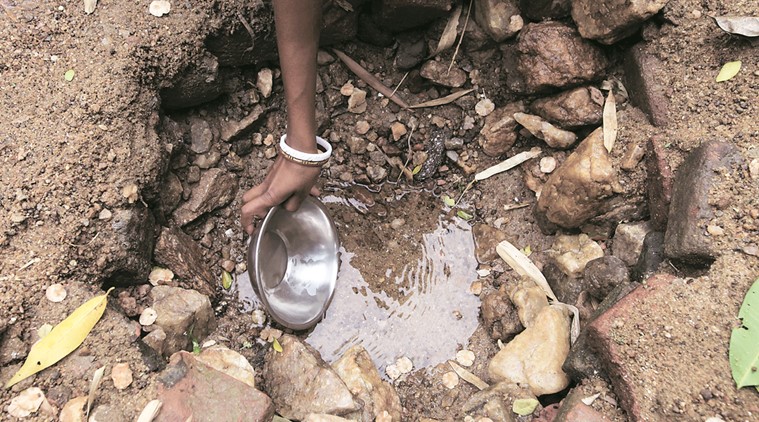 A woman draws water from a shallow well at Salboni village in Bankura. Every day, the top top soil is dug near riverbeds to extract water for domestic purposes. Partha Paul
A woman draws water from a shallow well at Salboni village in Bankura. Every day, the top top soil is dug near riverbeds to extract water for domestic purposes. Partha Paul
Subrata Mukherjee, a resident of Ward 15 of Bankura Municipality, had been at the forefront of one of the frequent road blocks in front of the circuit house, demanding clean potable water.
“We don’t get water for up to five days at a stretch. And when it finally comes, the water is murky and unfit for drinking. Life becomes miserable in the summer when the wells and the river go dry,” Mukherjee said.
Another resident, Alpana Das, said the problem of water scarcity has been there for “ages” and political leaders have failed to address it.
“We have complained several times. We are told every time that it will end soon. But we have been suffering for ages now. No one seems to have any permanent solution to it,” said Das.
[related-post]
Bankura has historically remained one of the most drought-prone districts of West Bengal. Nearly every year, the district faces drought with Saltora, Chhatna, Gangajalghati and parts of Onda being the worst affected areas. During summer, the wells go dry and villagers often resort to digging shallow wells near the riverbed to collect water for domestic purposes.
Naturally, it was one of the hottest issues in the run up to this year’s Assembly elections. The ruling Trinamool Congress claimed that the Left Front did nothing for the district in its
34-year rule. It also paraded a number of projects that were underway in the district.
The Opposition, however,alleged the Mamata Banerjee government did nothing for the area in the last five years and the ongoing projects were either those of the previous government or of the Centre.
Politicking apart, chairman of Bankura Municipality, Mahaprasad Sengupta, blamed the lack of rain for this year’s drought-like situation. “According to records, the rain that the district had recorded in last one year is the lowest in 100 years. On top of that, rampant felling of trees and sinking of deep borewells has led to lowering of the water table. These put together can be attributed to the acute water shortage here,” said Sengupta.
Several schemes, especially under the Backward Region Grant Fund (BRGF), launched in the last five years in the district are yet to bear fruit. Three major surface water-based supply schemes — Barjora-Bankura I and Bankura II water supply scheme, Hirabadh-Khatra and Ranibundh water supply scheme and Saltora-Chhatna water supply scheme — worth around Rs 1,100 crore are underway. The work on water treatment plants are almost complete and though it has missed a number of deadlines, it is expected to be completed later this year.
In 2011-2012, many drinking water projects under the Integrated Action Plan were initiated with 31 units being set up in Sarenga alone. Each unit, set up at a cost of Rs 1.92 lakh, comprises a 100-litre tank, which is filled by water from a borewell.
“Residents of 14 blocks will get benefits of these water projects. We have a few other projects on cards in the second phase, which will solve the problem of drinking water for residents of eight blocks — Mejia, Gangajalghati, Indpur, Taldangra, Joypur, Kotulpur, Patrasayar and Sonamukhi,” claimed Arup Khan, district Trinamool president.


